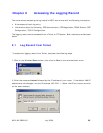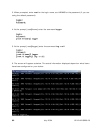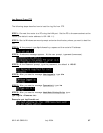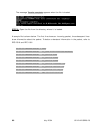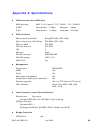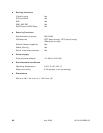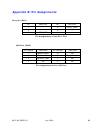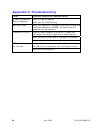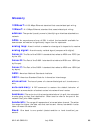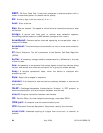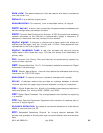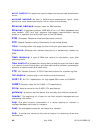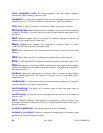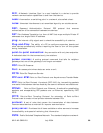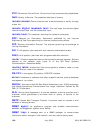6212-A2-GB20-20 July 2004 93
Glossary
.
100BaseT: A 100 Mbps Ethernet standard that uses twisted-pair wiring.
10BaseT: A 10 Mbps Ethernet standard that uses twisted-pair wiring.
address: The symbol (usually numeric) identifying an interface attached to a
network.
ADSL: An asynchronous form of DSL in which the bandwidth available for
downstream connection is significantly larger than for upstream.
analog loop: A test in which a modem’s voice signal is looped to its receiv
e
analog signal: A continuously variable signal (compare with digital).
Annex A: The Part of the G.992.1 standard that refers to ADSL over POTS (a
d
by the US).
Annex B:
The Part of the G.992.1 standard that refers to ADSL over ISDN (a
d
by Europe).
Annex C:
The Part of the G.992.1 standard that refers to ADSL over ISDN (a
d
by Japan).
ANSI:
American National Standards Institute.
ASCII: American Standard Code for Information Interchange.
attenuation: The loss of power of a transmitted signal as it travels over a
wire.
auto-summary: A RIP command to restore the default behavior of
automatic summarization of subnet routes into network-level routes.
backbone: The main circuit that carries data before it is split into extended
circuits going to their final destination. Often used to refer to the part of the
network that joins LANs together.
bandwidth: The range of frequencies of a transmission channel. The wider
the range the higher the data rate that can be sent. Hence, bandwidth is also
taken to mean the data rate.
Baud: One baud is one symbol (state-transition or level-transition) per
second.



